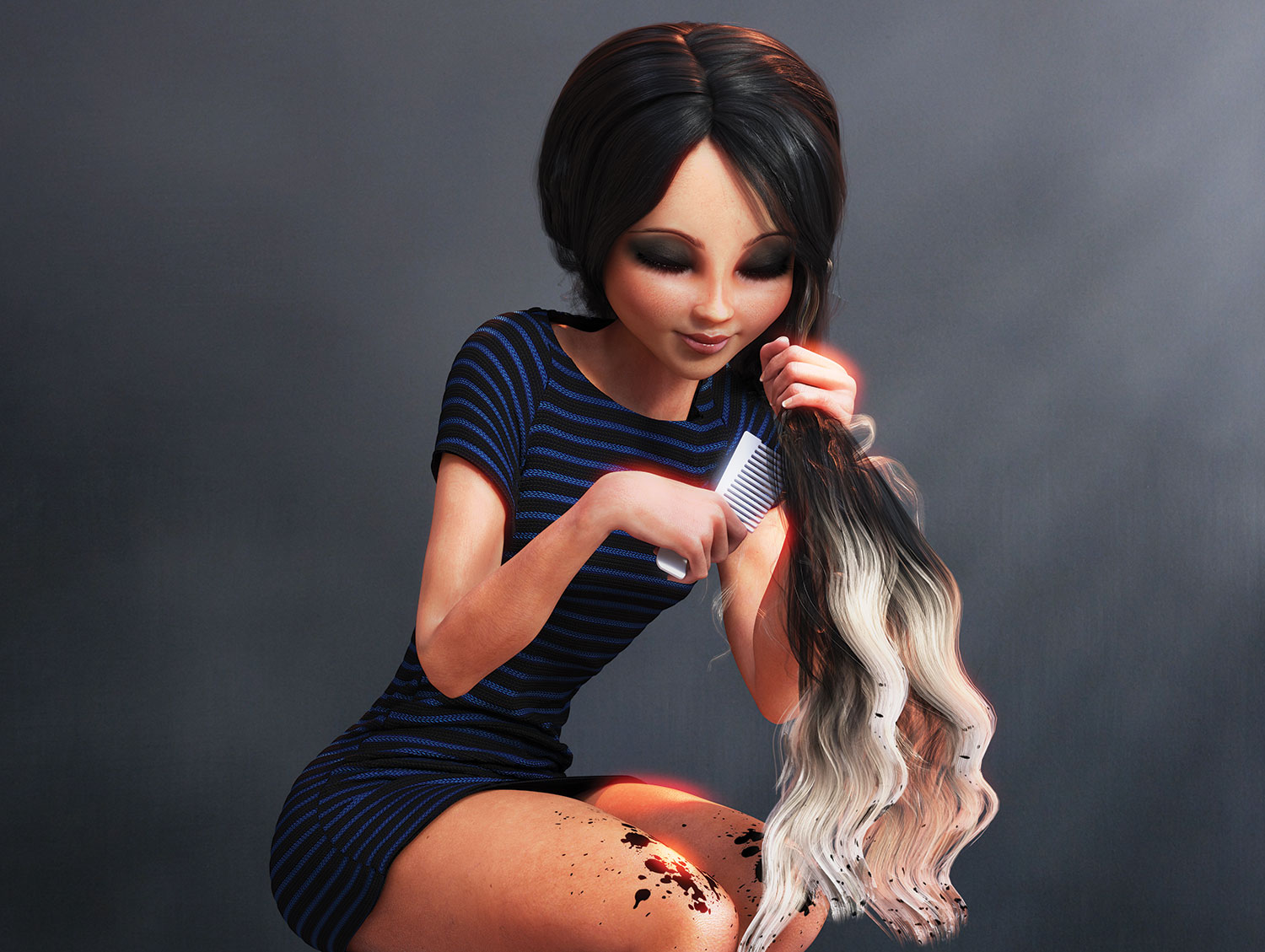How to move between DAZ Studio and ZBrush
Move your work between the two 3D tools to take advantage of both their strengths.

For newcomers to ZBrush, the interface seems very different to other 3D modelling programs, so can be intimidating. If you often find yourself scratching your head and searching the web for training or tutorials on how to accomplish tasks in ZBrush, we're here to help.
This image, Metamorphosis of Nyssa, is about the never-ending desire to change who we are, when all the beauty we need is already inside us. This image is inspired by Lois van Baarle, and is deeply influenced by the work of Carlos Ortega Elizalde.
Although the final composition was laid out in DAZ Studio to take advantage of the GPU accelerated real-time rendering with photo-realistic results, it also used Cinema 4D for much of the initial modelling, Marvelous Designer for the dress, and ZBrush extensively to refine the details.
Just as moving between DAZ Studio and Cinema 4D helps you strike the right balance between detailed modelling and an accurately posed character, moving between DAZ Studio and ZBrush in this case enabled us to adjust the character's hair bit by bit.
For greater independent control over the different hair parts, we broke up the hair into several sections, which are all imported into DAZ Studio as separate objects. This way, we could select any hair part we weren't happy with and move it back and forth between DAZ Studio and ZBrush, creating a new morph and making subtle changes until happy.
01. Send objects from DAZ Studio to ZBrush
![Use the Send to ZBrush option to export from DAZ Studio [Click on the arrows icon to enlarge this image]](https://cdn.mos.cms.futurecdn.net/BMrMXimPS2UXeZv3dCrVw4.jpg)
GoZ (short for GoZBrush) is a dynamic bridge between ZBrush and other 3D packages. With a single click, you can send your object from DAZ Studio to ZBrush for editing. Once you are all done, you can then send it back to DAZ Studio, again with just one click.
Select the object you want to adjust on the Scene tab in DAZ Studio. Click File, and then Send to ZBrush. When the GoZ Export Options dialog appears, select Export with Deformations and click Accept. ZBrush will open with a blank canvas.
Get the Creative Bloq Newsletter
Daily design news, reviews, how-tos and more, as picked by the editors.
If the LightBox menu appears, you can just click the LightBox button to hide it and get it out of the way.
02. Set up objects in ZBrush
![Orient your object and bring it fully into view [Click on the arrows icon to enlarge this image]](https://cdn.mos.cms.futurecdn.net/KfwhK5Xo9xQcX5bjrwdWw4.jpg)
Click and drag on the canvas to add your object. Hold down the Shift key at the same time to snap the object to the correct orientation. Click the Edit button on the tool bar. Note that this is different to Edit on the File menu.
Now the object is successfully loaded in ZBrush, click Frame to bring the object to the centre of the canvas and fully into view.
03. Edit the object in ZBrush
![Use the Move and Move Topological brushes to make adjustments [Click on the arrows icon to enlarge this image]](https://cdn.mos.cms.futurecdn.net/F7Q999tKgz87At5dh3XDx4.jpg)
From the Brush menu, use the Move and Move Topological brushes to make any adjustments to my object. Other brushes will work, but keep in mind that drastic changes, especially to the core geometry, may have unintended results back in DAZ Studio.
Once done, click on the GoZ button in ZBrush and you'll automatically be taken back to DAZ Studio.
04. Move back into DAZ Studio
![Back in DAZ Studio, morph your adjustments to taste [Click on the arrows icon to enlarge this image]](https://cdn.mos.cms.futurecdn.net/fxk3y9hWGwxF6axtrgKF45.jpg)
In DAZ Studio, the GoZ Update Options dialog appears. Choose Update Geometry, select Create Morph, and click Accept. The new morph is now available by clicking the word ZBrush on the Parameters tab.
Adjust the Morph slider to your taste. Creating morphs with ZBrush is handy as your adjustments can be as dramatic or a subtle as you want.
This article originally appeared in 3D World issue 225. Buy it here.
Related articles:

Thank you for reading 5 articles this month* Join now for unlimited access
Enjoy your first month for just £1 / $1 / €1
*Read 5 free articles per month without a subscription

Join now for unlimited access
Try first month for just £1 / $1 / €1
